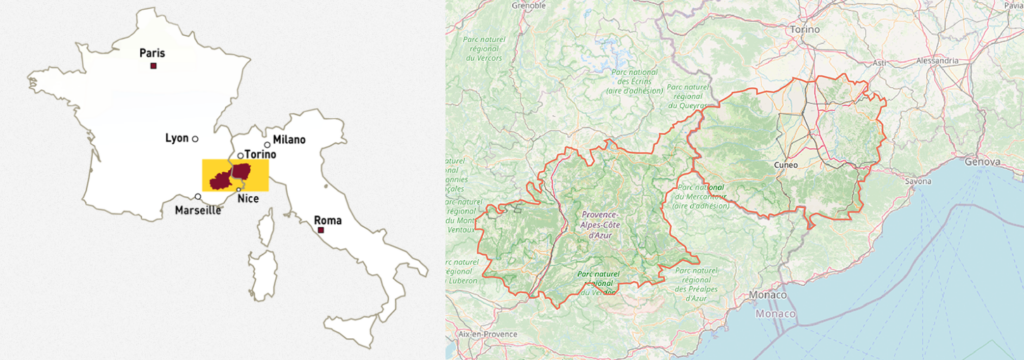PALEOrama traces the evolution of landscapes in the Alpes de Haute-Provence and the Province of Cuneo from the Palaeolithic Period to the present day. These two regions, located on either side of the French-Italian border, cover comparable areas of around 6,900 km2 each. They are primarily characterised by the topography of the Alps and their foothills (maximum altitude between 3,400 and 3,800 m). The frequently chalky soils are ideal for preserving certain remains such as bones.


The mountainous topography means that environments are fragmented and climatic conditions vary in the different zones. Although the conditions in Haute-Provence are Mediterranean (prolonged dry summers and most of the rainfall occurring between seasons), the climate is more continental on the Cuneo plain and mountain-like towards the interior of the Alps. The gradients, the effects of slopes and climatic influences result in a wide range of vegetation, and therefore ecosystems, ranging from Mediterranean to Alpine zones. However, steep, erosion-prone soils are all the more sensitive to the consequences of human activities such as agriculture, the exploitation of forest resources and pastoralism, which began to develop in the Neolithic Period (8,000 years ago).
As a result, since the 1970s, a whole host of protected areas (National Parks, Regional Nature Parks, Nature Reserves) have been created to preserve the vitality of these environments. These sanctuaries of biodiversity also demonstrate society's attachment to a heritage shaped by the practices of successive generations.